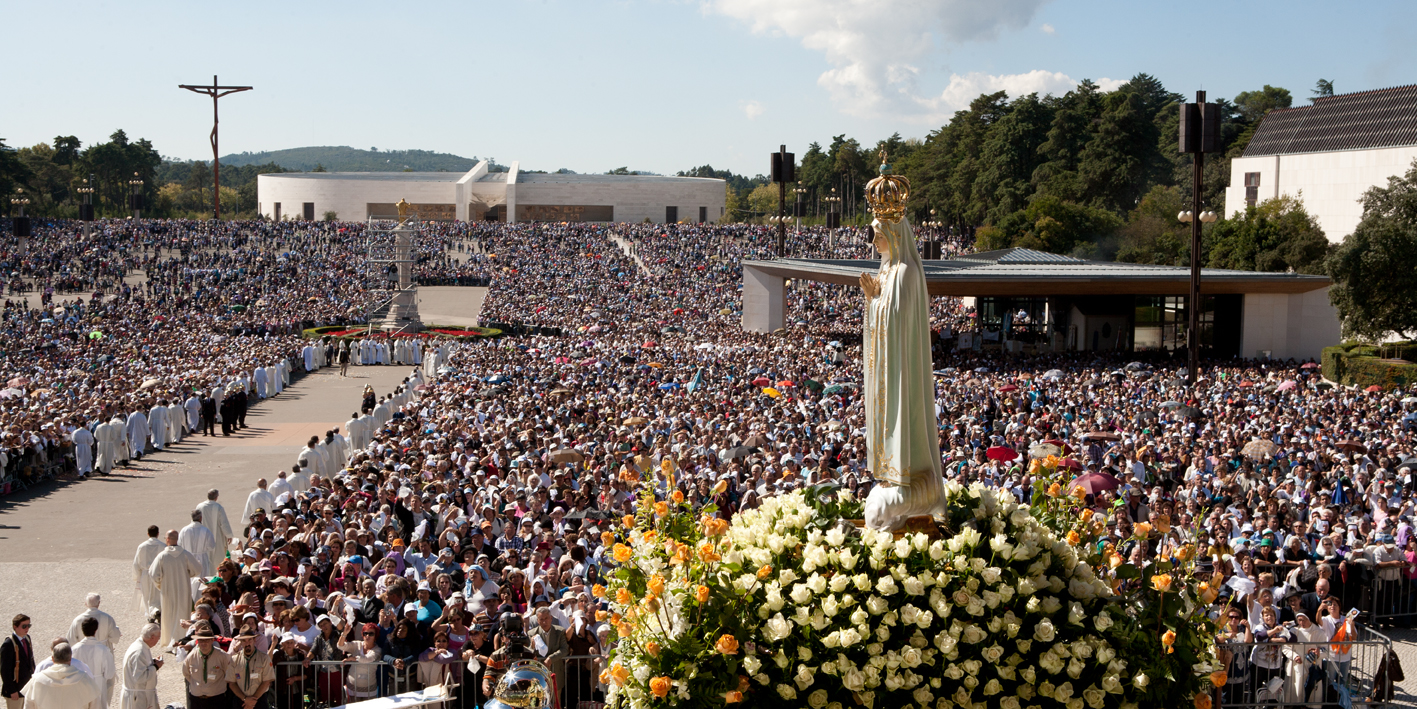
The Mass is believed by Catholics to be an unbloody sacrifice in which by the power of God, the institution of Christ, and the ministry 'of the priest, the body and blood of our blessed Saviour are produced upon the altar, under the appearances of bread and wine; and are there offered to the Almighty, not only as a propitiation for the sins of mankind, but also in testimony of the adoration or homage which is his due; in thanksgiving; for benefits received, in which view it is eucharistic; and to beseech future favors, whereby it is impetratory.
A Catholic church is a Christian temple, erected for the purpose of having the holy sacrifice of the Mass offered therein. This sacrifice is made upon an altar, which is a table sufficiently large to sustain the offerings, the book and other necessaries. Formerly the holy sacrifice was offered in the catacombs, upon the tombs of the martyrs. And frequently since that period, when splendid temples were erected, their bodies or remains have been removed from those obscure resting places, and enshrined in rich sarcophagi, over which the table of the altar was placed. The relics of other saints have been also, in several instances, thus entombed.
The rapt Evangelist beheld under" the heavenly altar, where stood the immolated Lamb, the souls of those slain for the word of God. Glorious in their blood, they reposed in celestial bliss until their expected companions should arrive; whilst under the altars upon the earth, their bodies rested honorably enshrined in those places where the Lamb was produced as slain, and offered in the midst of the holy choirs below.
The crucifix or image of the Saviour in his state of bloody immolation, is very appropriately placed upon the centre of the altar where that commemorative immolation is to be made. On each side candles are lighted, not only as a token of joy, but also as by their blaze they mystically exhibit the descent of the Holy Ghost in the form of tongues of fire, for the purpose of endowing the Apostles, the first ministers of the Catholic Church, with power from on high, to perform the stupendous works for which they were commissioned by an incarnate God.
The altar is a consecrated stone. This has been the case during upwards of fifteen hundred years, previously to which period, no law prescribed any particular material. The Church also by the very color of the front of the altar, and of the vestments, leaches her children the nature of the solemnity which she celebrates. Thus, for instance, white is used upon the great festivals of the Trinity, of the Saviour, of his blessed mother, of angels, of saints, who without shedding their blood gave their testimony by the practice of exalted virtues; and on some other occasions. Red is used on the feast of Pentecost, when the Holy Ghost descended in the form of tongues of fire; on the festivals of martyrs, and the like. In limes of penance, violet is used, green on days when there is no special solemnity, and black on Good Friday, and on occasion of offices for the deceased.
Ceremonial:
for the use of the Catholic Churches of the United States of America.
Published by Order of the First Council of Baltimore,
with the approbation of the Holy See

 inundado por um mistério de luz que é Deus e N´Ele vi e ouvi -A ponta da lança como chama que se desprende, toca o eixo da terra, – Ela estremece: montanhas, cidades, vilas e aldeias com os seus moradores são sepultados. - O mar, os rios e as nuvens saem dos seus limites, transbordam, inundam e arrastam consigo num redemoinho, moradias e gente em número que não se pode contar , é a purificação do mundo pelo pecado em que se mergulha. - O ódio, a ambição provocam a guerra destruidora! - Depois senti no palpitar acelerado do coração e no meu espírito o eco duma voz suave que dizia: – No tempo, uma só Fé, um só Batismo, uma só Igreja, Santa, Católica, Apostólica: - Na eternidade, o Céu!
inundado por um mistério de luz que é Deus e N´Ele vi e ouvi -A ponta da lança como chama que se desprende, toca o eixo da terra, – Ela estremece: montanhas, cidades, vilas e aldeias com os seus moradores são sepultados. - O mar, os rios e as nuvens saem dos seus limites, transbordam, inundam e arrastam consigo num redemoinho, moradias e gente em número que não se pode contar , é a purificação do mundo pelo pecado em que se mergulha. - O ódio, a ambição provocam a guerra destruidora! - Depois senti no palpitar acelerado do coração e no meu espírito o eco duma voz suave que dizia: – No tempo, uma só Fé, um só Batismo, uma só Igreja, Santa, Católica, Apostólica: - Na eternidade, o Céu!